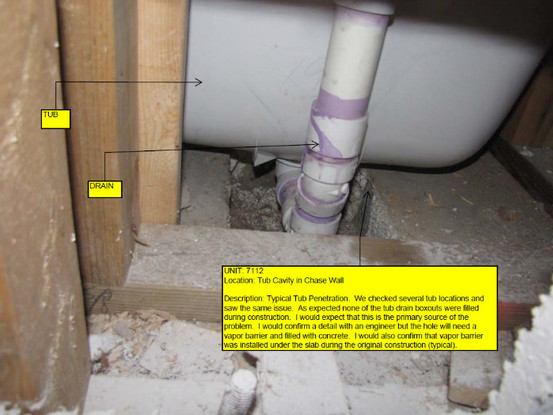Targus was retained to perform an environmental site assessment (Phase I ESA and additional non-ASTM services) of an apartment community constructed on elevated rocky ground. As an additional service, Targus conducted short-term screening of a subset of the ground-contact dwelling units for radon.
A minority of units were found to exceed the EPA Action Level of 4.0 picoCuries per liter of air (pCi/L). In an effort to secure more reliable indicators of average radon concentrations, long-term post-closing testing was conducted. Replicate detectors retrieved after a six-month exposure period confirmed elevated radon levels in a subset of units tested, including those that were found to be elevated during the initial screening. An additional round of testing was conducted over a period of 12 months in each of the ground-contact units.
A local radon mitigation contractor was engaged by the owner to install sub-slab depressurization (SSD) systems in selected units with elevated radon concentrations. Post-mitigation testing revealed that radon concentrations had not been reduced and insignificant vacuum was introduced across the unit floors. A combination of larger fans and extension of sub-slab extraction port openings minimally reduced radon concentrations. Targus undertook interior assessments that included cutting wall openings and removing floor coverings to expose and observe the slab in targeted areas. Field observations confirmed the existence of a number of large floor openings: at joints between slab and load-bearing walls, beneath tubs, and around other plumbing penetrations. Although interior pressurization seemed suitable for mitigation, constraints on introduction of unconditioned air imposed by property management in consultantion with their heating, ventilation, and air conditioning (HVAC) contractor precluded that approach.
Sealing of openings on a trial basis, together with installation of higher volume fans, resulted in substantial radon concentration reductions. In consideration of the potential for tenant disturbance, Targus prepared a plan for incremental mitigation. Each of the units with elevated radon concentration was equipped with a dedicated SSD system and a formal, documented operations, maintenance, and inspection program was established. Included in the mitigation plan was a procedure for filling openings beneath tubs and sealing open floor joints in conjunction with replacement of carpet during unit turnovers. Mitigation was demonstrated to be complete and effective through radon testing conducted in advance of disposition.

